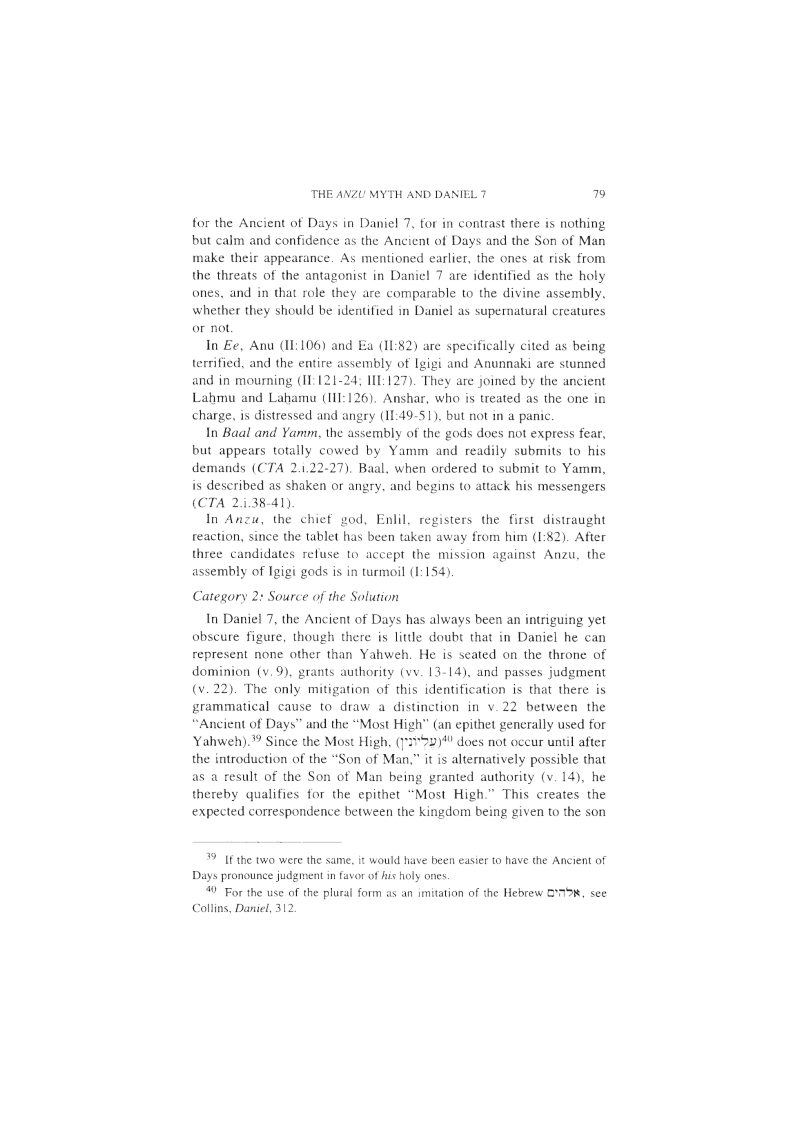John H. Walton notes that, in the Aramaic of Daniel 7, there is a possible distinction between the "Ancient of Days" and the "Most High."
- Type
- Book
- Source
- John H. Walton Non-LDS
- Hearsay
- DirectSecondary
- Reference
John H. Walton, "The Anzu Myth As Relevant Background for Daniel 7?" in The Book of Daniel: Composition and Reception, ed. John J. Collins and Peter W. Flint, 2 vols. (Supplements to Vetus Testamentum LXXXIII,I; Formation and Interpretation of Old Testament Literature II, 1; Leiden: Brill, 2001), 1:79-80
- Scribe/Publisher
- Brill
- People
- John H. Walton
- Audience
- Reading Public
- Transcription
In Daniel 7, the Ancient of Days has always been an intriguing yet obscure figure, though there is little doubt that in Daniel he can represent none other than Yahweh. He is seated on the throne of dominion (v. 9), grants authority (vv. 13-14), and passes judgment (v. 22). The only mitigation of this identification is that there is grammatical cause to draw a distinction in v. 22 between the "Ancient of Days" and the "Most High" (an epithet generally used for Yahweh). Since the Most High, (עֶלְיוֹנִ֑ין) does not occur until after the introduction of the "Son of Man," it is alternatively possible that as a result of the Son of Man being granted authority (v. 14), he thereby qualifies for the epithet "Most High." This creates the expected correspondence between the kingdom being given to the son of man in v. 14 and to the Most High and his holy ones in v. 27.
- Citations in Mormonr Qnas
The B. H. Roberts Foundation is not owned by, operated by, or affiliated with the Church of Jesus Christ of Latter-day Saints.

